The 1957 Ford Mystere Story
By Jim and Cheryl Farrell
The Mystere was a concept car originally intended as the Ford stablemate to the Lincoln Futura during the 1955 show season. The ’55 show season began with the 47th annual Chicago Auto Show, which started on January 8, 1955. The Futura was there. The Mystere, however, was not—nor was it at any auto show that season. Here’s what happened.
In July 1954, after designer Bill Boyer finished design work on the ’55 Thunderbird, he was asked by Ford design studio head Frank Hershey to design a new Ford concept car for the 1955 show circuit. Hershey was knee deep designing the ’57 production Ford with other studio designers, so the only direction he gave Boyer was that the new concept car’s design had to emphasize the distinctive finned swoosh that was planned for the sides of the ’57 Ford. Boyer made one sketch and showed it to his studio manager, Damon Woods, who loved it. Woods grew up in France and suggested they call the new concept car the Mystere after the French Mystere jet fighter plane. Package measurements were determined by Hershey, Bob Maguire (exec) and Woods. Studio designers were then given two days to adapt Boyer’s design to a full-sized blackboard rendering, which they had to redo when Hershey increased the wheelbase of the Mystere to 121” to make it look longer and more integrated.
There was no engineering done on the Mystere. A 3/8-scale exterior clay model was made together with a full-sized interior buck. Designers who worked on the design of the Mystere were Woods, Boyer, Bill Braathan, Ralph Ortiz, Pierre Crease, John Van Tilberg, John Vanchovie, Ed Jaquet (student/intern), Jim Quinlan and Gale Halderman. The front end was changed from Boyer’s original design when it was determined the original front end design wouldn’t work.
Because Ford’s Design Department shops were not yet completely staffed after the move to the new building the year before, the Mystere’s fiberglass body was built by Creative Industries who also made the Plexiglas top and the car’s chassis from steel I-beams. The Mystere had no engine or running gear.
The Mystere was finished in December 1954. It was built to look as much like a jet fight as was feasible given the fact it was supposed to be powered by a gas-turbine rear engine (not installed). Other supposed features on the Mystere included an airplane-like interior with a U-shaped steering wheel with buttons and triggers controlling many of the car’s functions; a steering wheel that could be flipped from left to right side; keyless entry; buttons for the ignition switch; and floating instrument gauges.
Meanwhile, at the same time the Mystere was being designed and then built at Creative Industries, Hershey, Maguire, Woods and other studio designers were busy finishing up their design for the production ‘57 Ford. After he looked at their proposal, Henry Ford II asked Ford’s design consultant George Walker to evaluate what Hershey and crew planned for the 1957 Ford. Walker said he could do better. HFII said “OK, do it.” So Walker recruited Joe Oros, one of his employees assigned to the Ford studio, and Gale Halderman, a recently-hired Ford designer, to help redesign the ’57 Ford. Walker, Oros and Halderman accentuated the Mystere’s exterior features even more on their ’57 Ford proposal. The end result is that there were now two ’57 Fords—the original one designed by Hershey and crew and the car designed by Walker, Oros and Halderman. HFII’s solution was to market both cars. The Walker car became the ’57 Ford Fairlane and Fairlane 500 (118” wheelbase), and the Hershey proposal became the Custom and Custom 300 series (116” wheelbase) ‘57 Ford.
Even before design of the ’57 Ford was finalized, it became obvious the Mystere telegraphed the design of the ’57 Ford, especially the Fairlane 500. The solution was to postpone introduction of the Mystere until it was too late for other manufacturers to copy any of the Mystere’s features on their ’57 production cars.
In May 1955, a year and a half before the production ’57 Ford was introduced, Walker was appointed head of the Ford Design Department, which he promptly renamed the Styling Center. Walker’s appointment was due at least in part to his redesign of the not yet introduced ’57 Ford. Frank Hershey promptly quit rather than work under Walker. Walker then named Maguire to replace Hershey as head of the Ford studio. Halderman was made a manager. A year later, Walker named Maguire to replace Alex Tremulis as head of the Advanced studio. Oros was then appointed head of the Ford studio.
What happened to the Mystere? Although the public was never told why one of Ford’s most fantastic concept cars was introduced after the auto shows were mostly done for the year, promptly at 11:30 am, on Wednesday, October 5, 1955, Walker, proud as a peacock, introduced the fuchsia-pink and black Ford Mystere (with a pearlescent-white band over the top) at the Ford Rotunda. And two years later, at the end of the ’57 model year, Ford had outsold Chevrolet, cementing Walker’s job as head of the Styling Center and making HFII one extremely happy guy.
Photos: Ford Design
Books by Jim and Cheryl Farrell
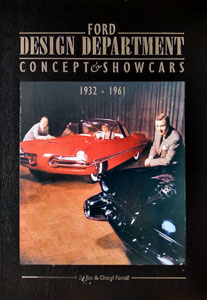
Ford Design Department—
Concepts & Showcars
1999, 10×13, 400 pages, Fully indexed
900 photos. Includes 150+ designers and sculptors, and highlights 100 concept cars.
ISBN 0-9672428-0-0
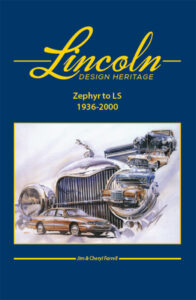
Lincoln Design Heritage:
Zephyr to LS (1936-2000)
2021, 10×13, 480 Pages, Fully Indexed
1,600 photos and illustrations
ISBN 978-0-9672428-1-1
The Ford book is $50 plus $7 S&H (US). The Lincoln book is $85 plus $10 S&H (US). Both books bought together are $110 plus $17 S&H (US). To order, email: cfarrell57@gmail.com

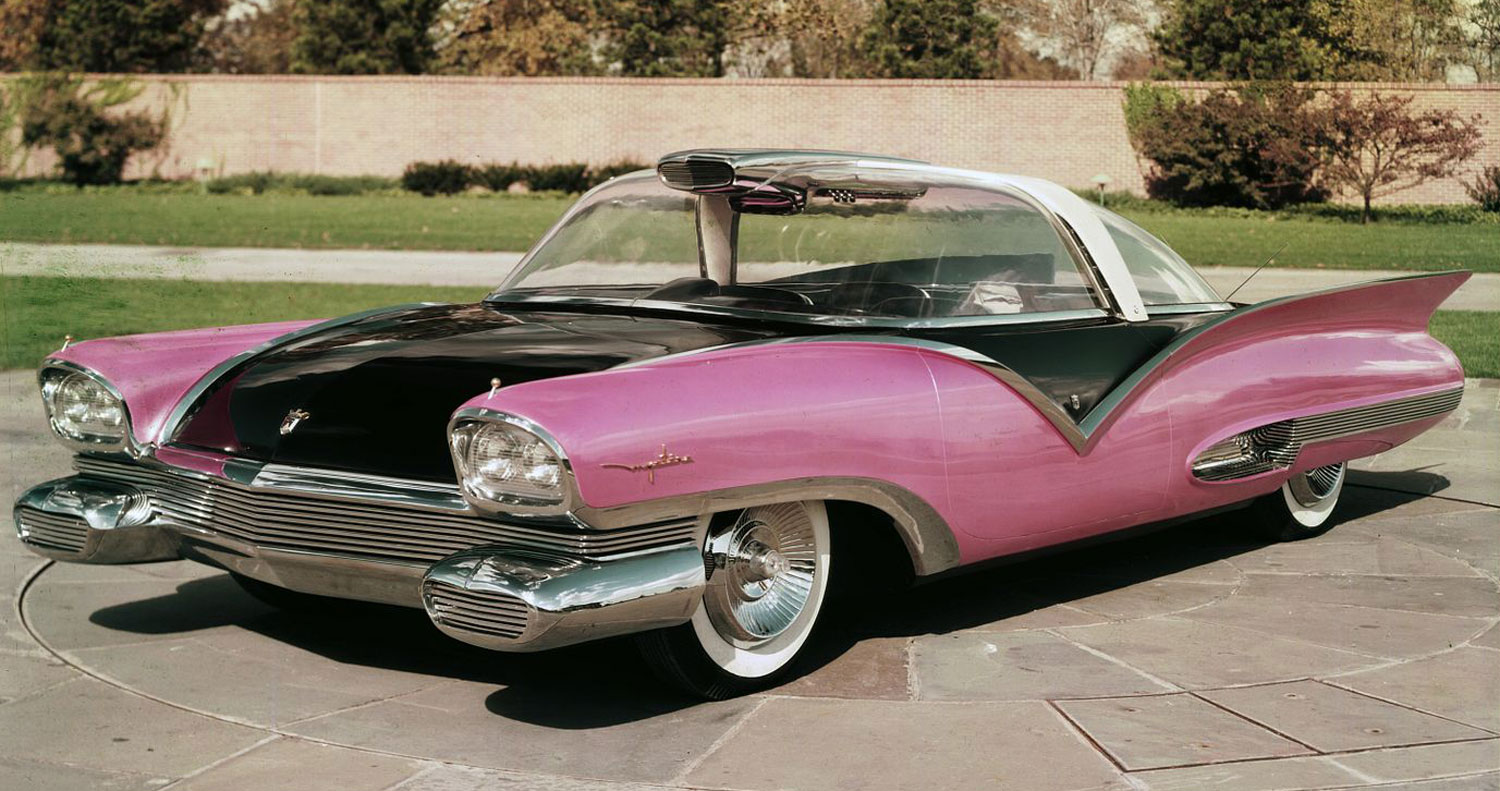
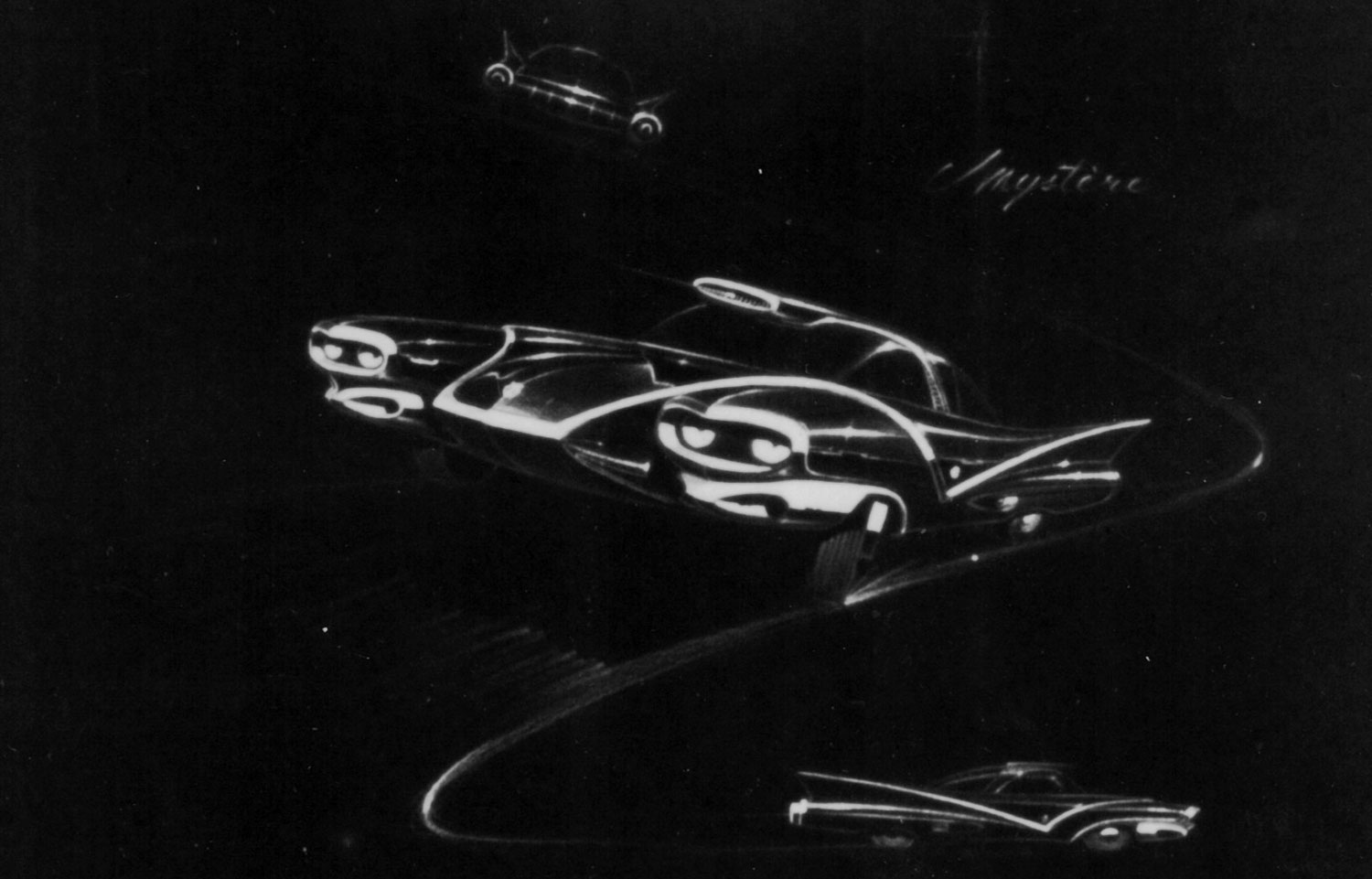
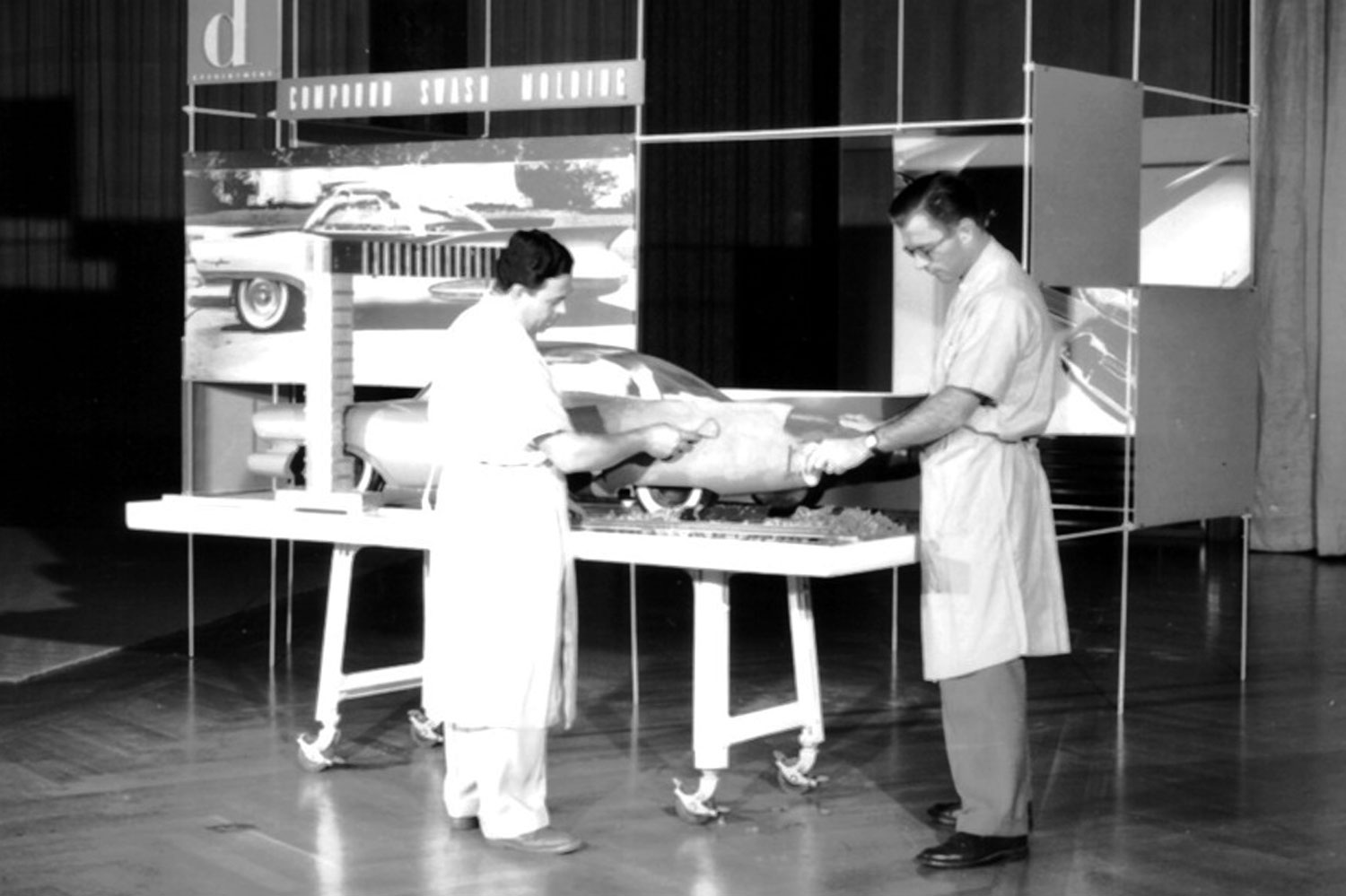
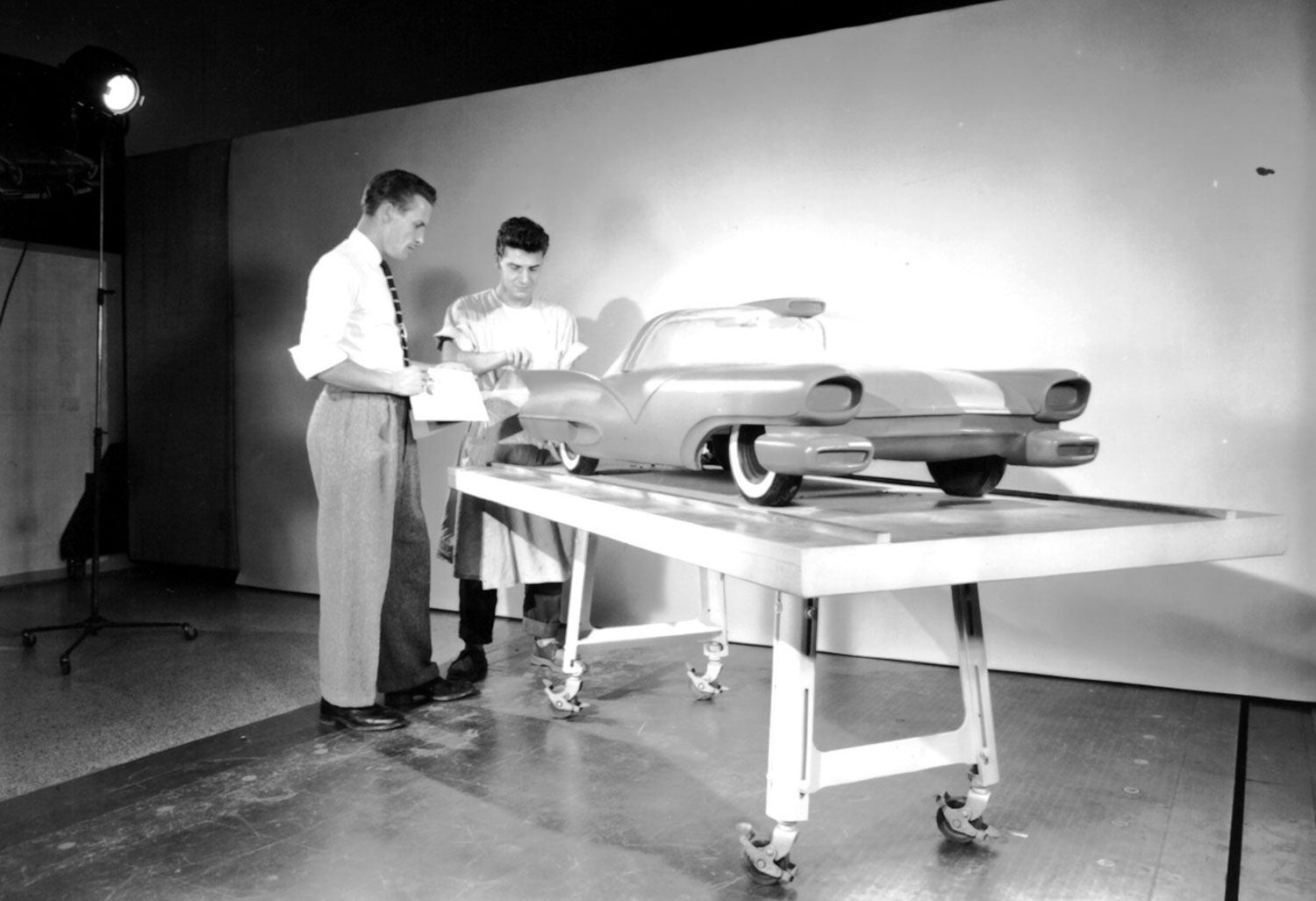
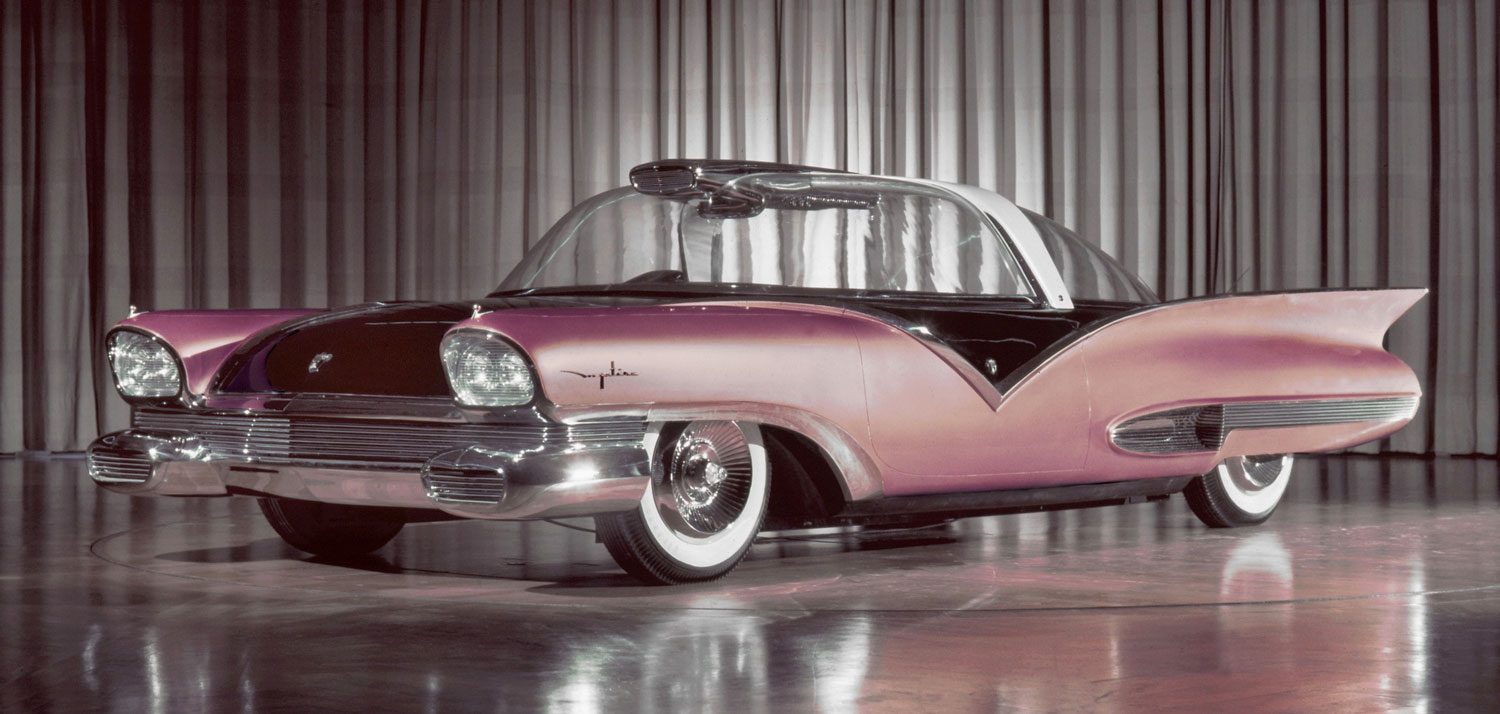
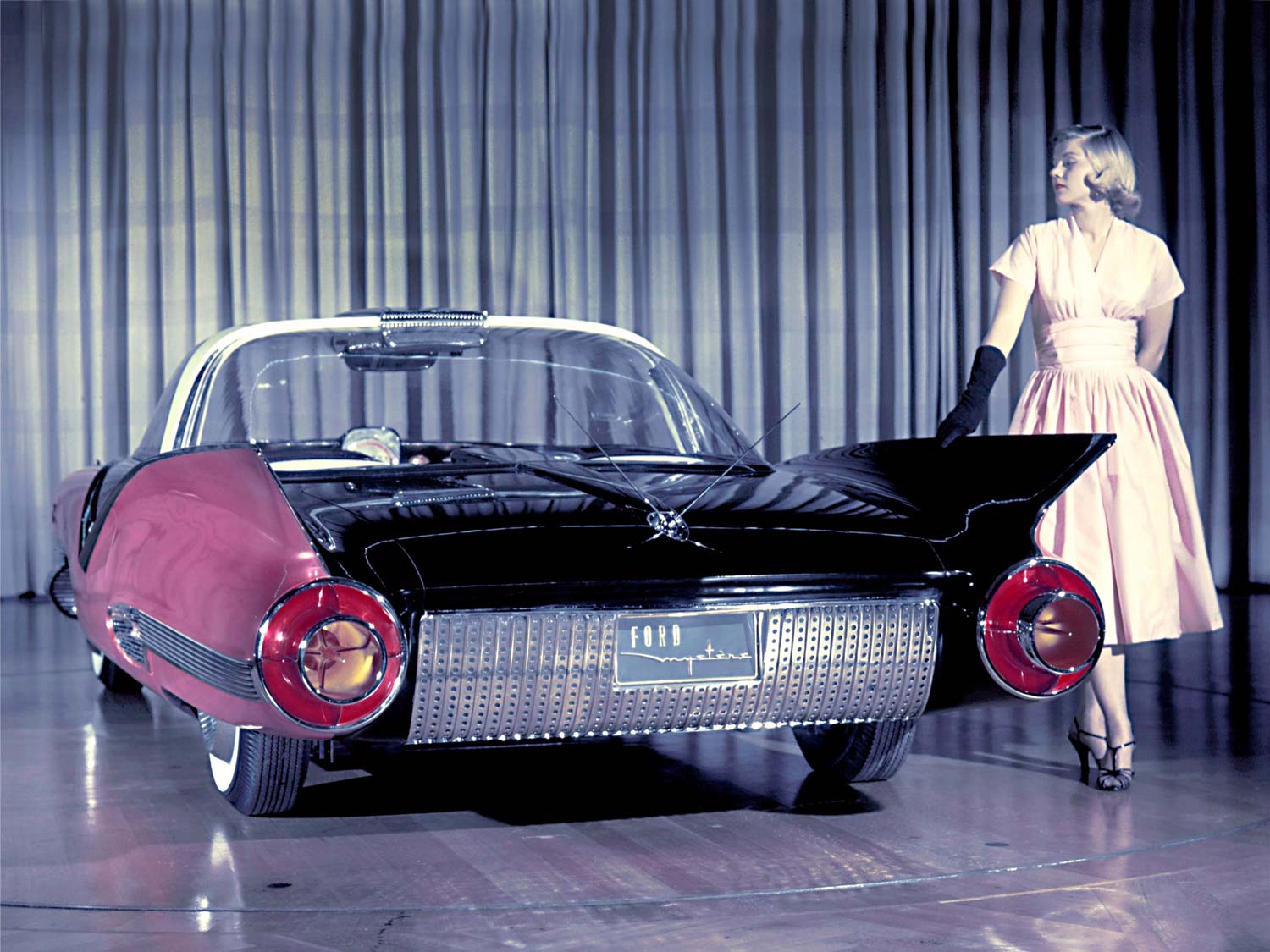
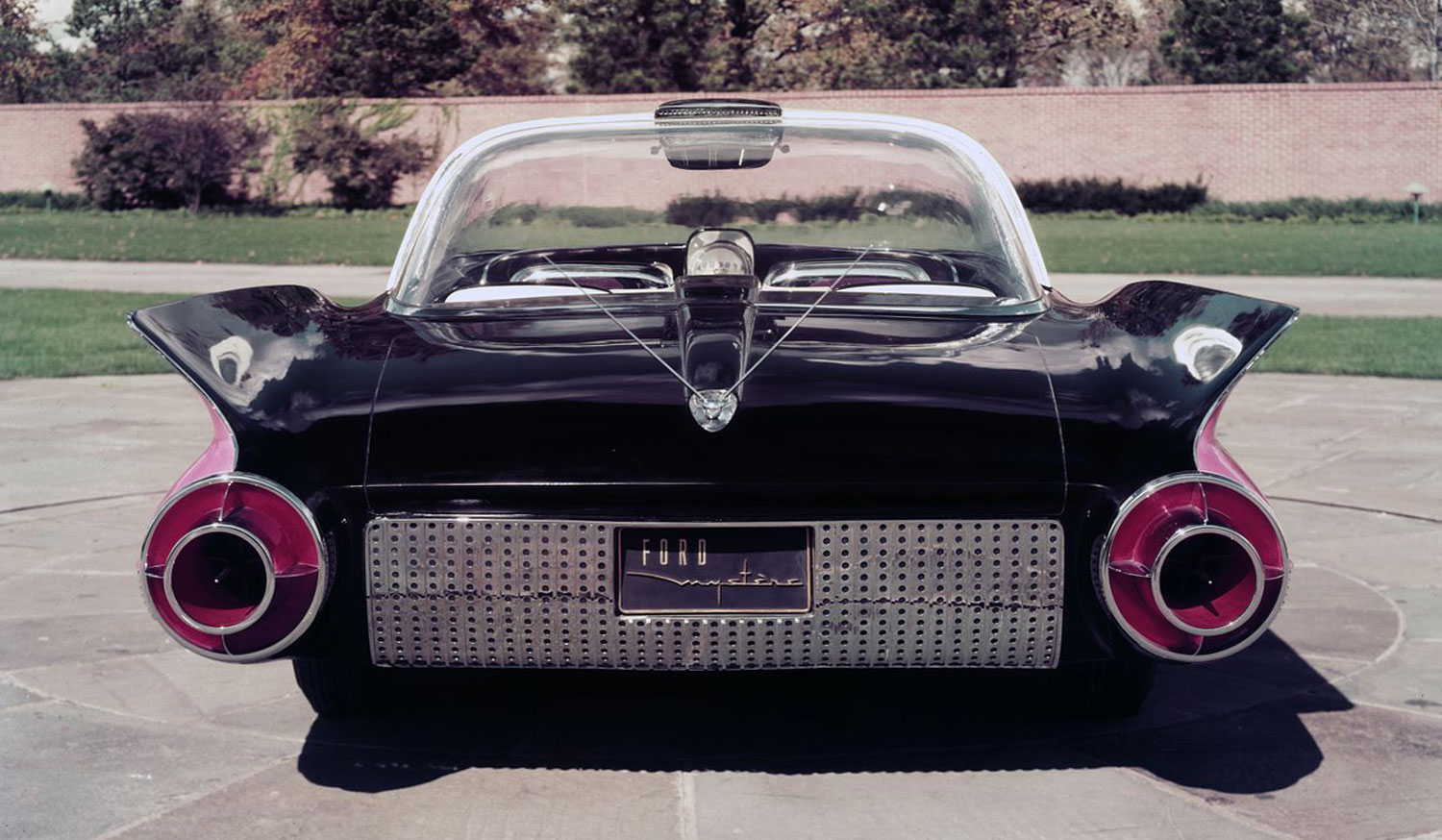
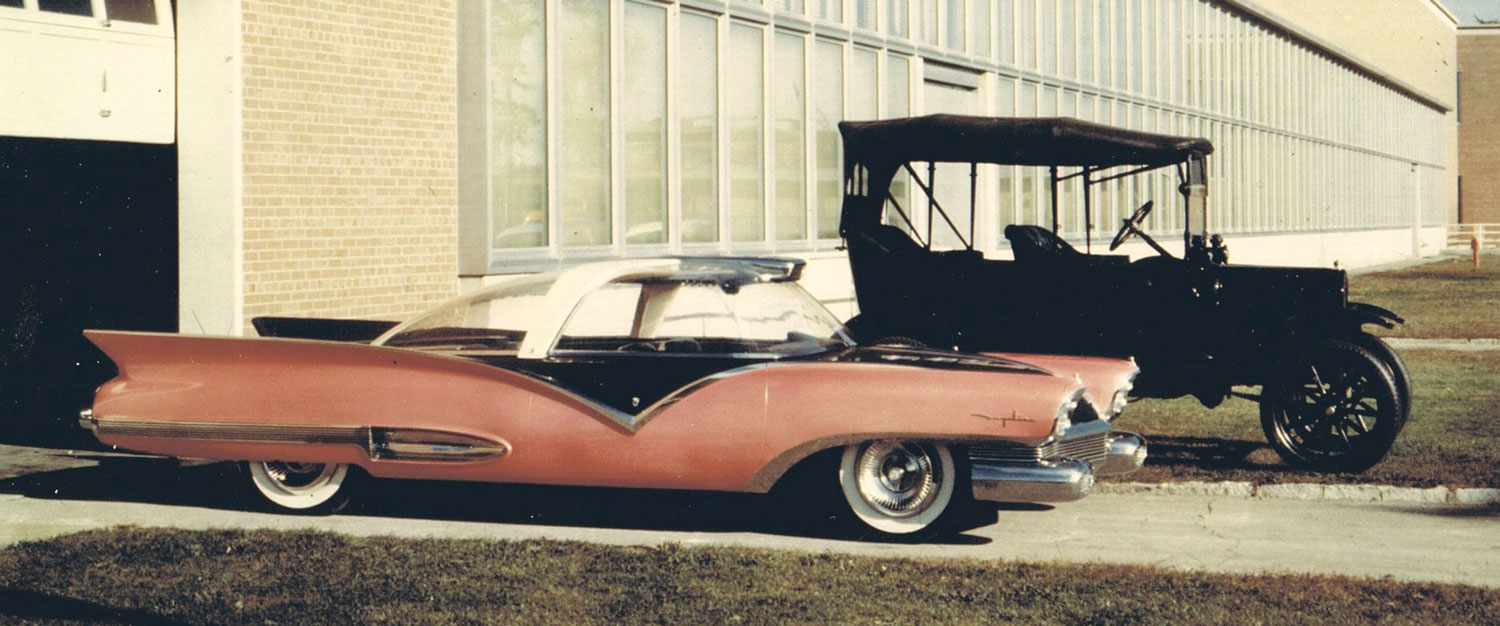
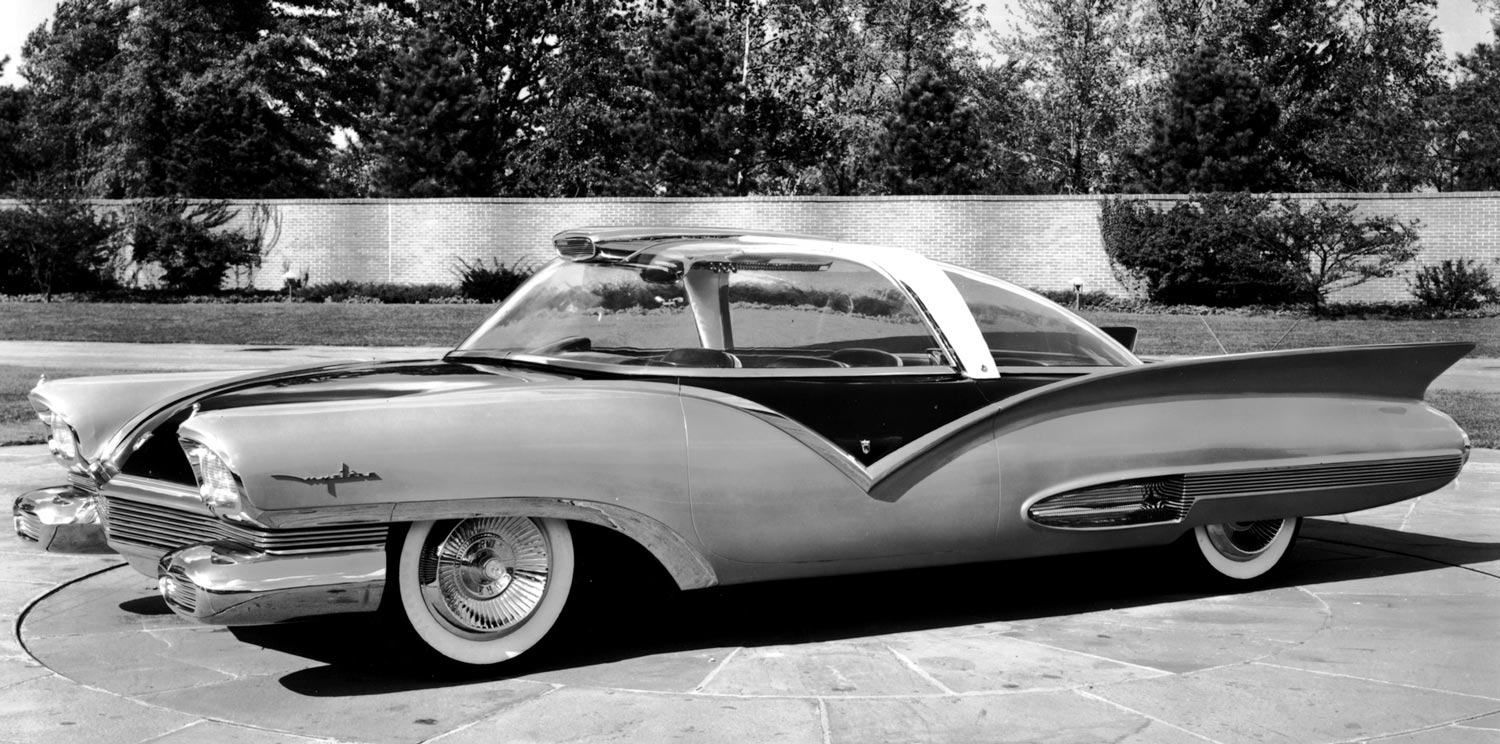
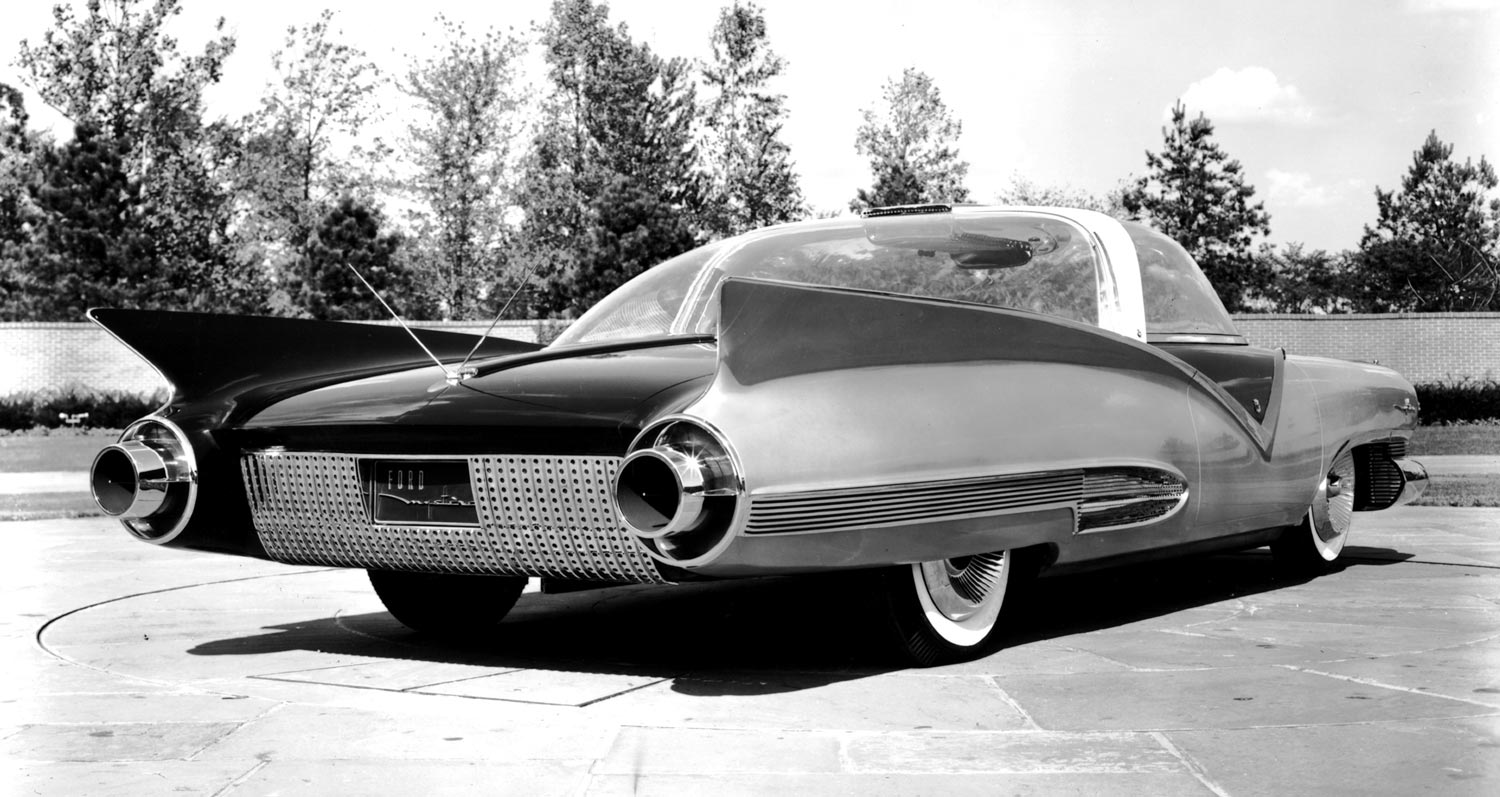
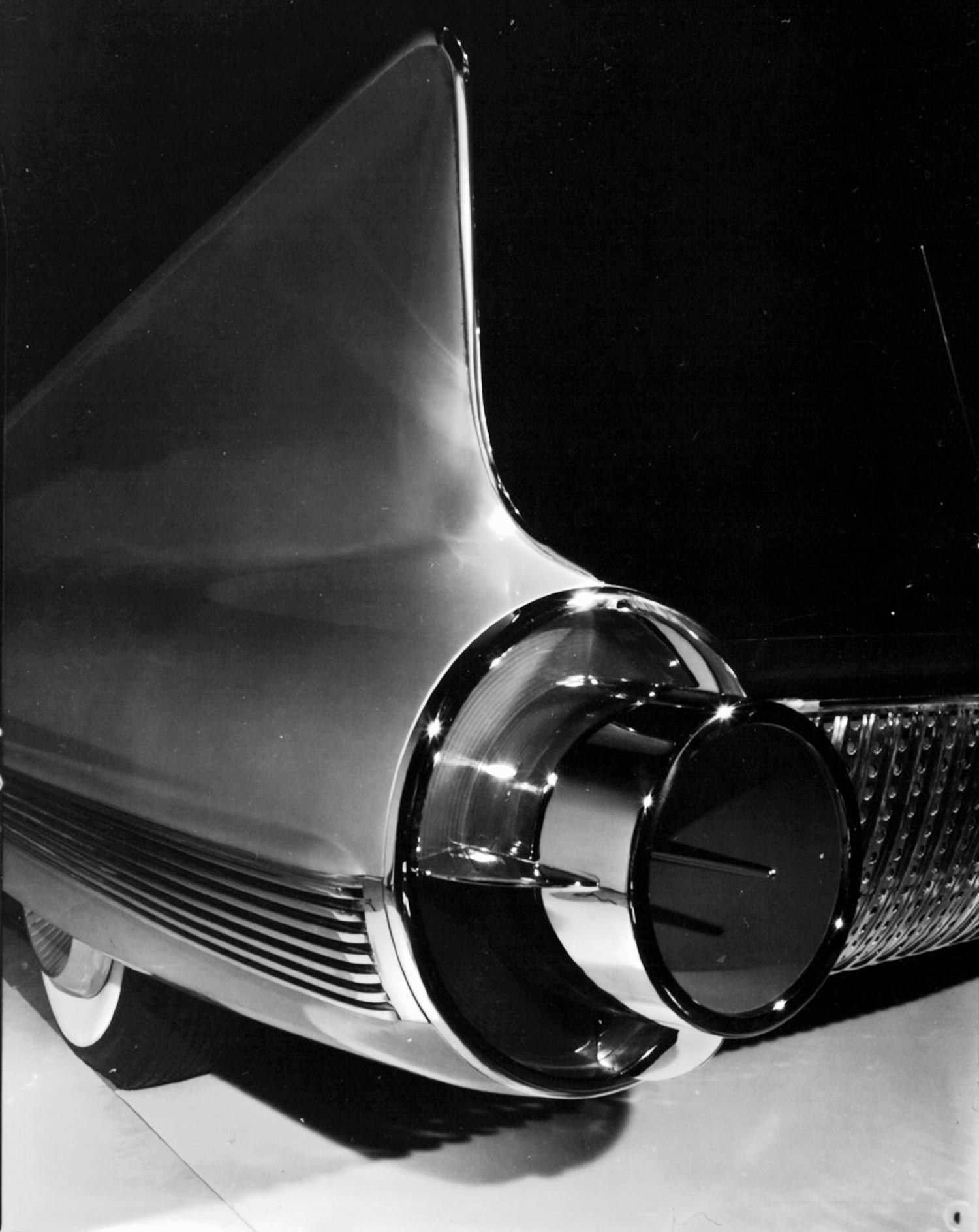
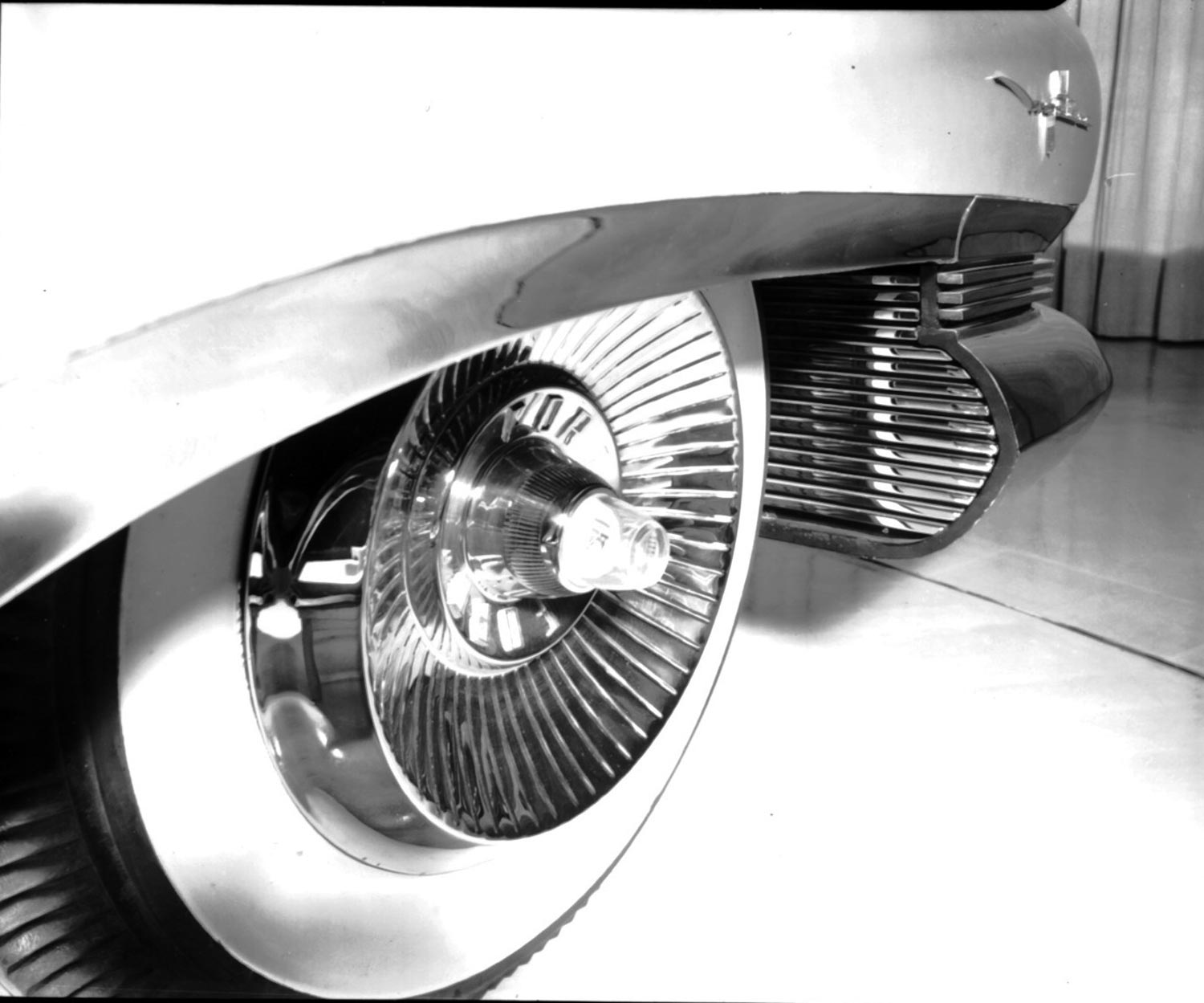
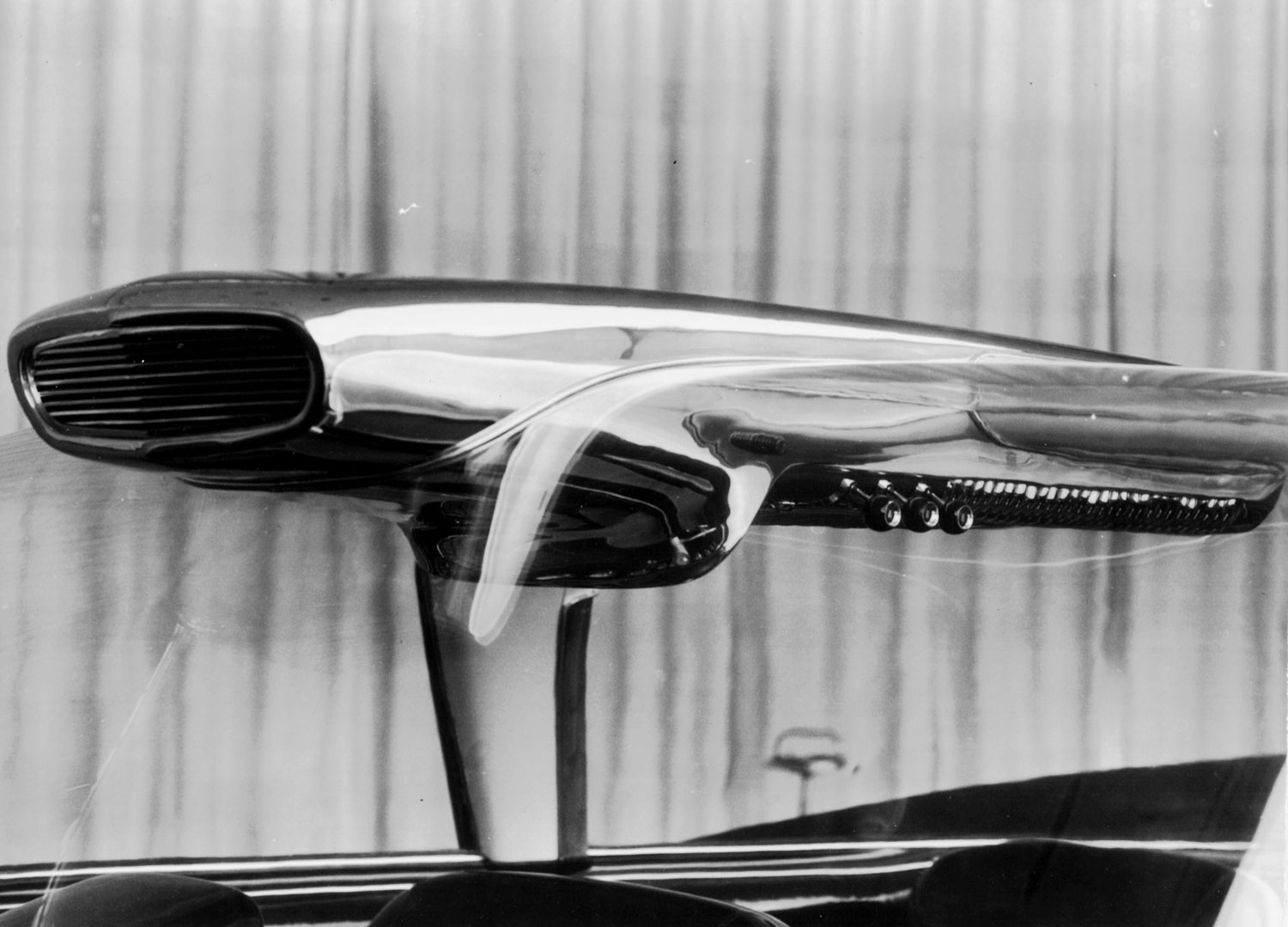
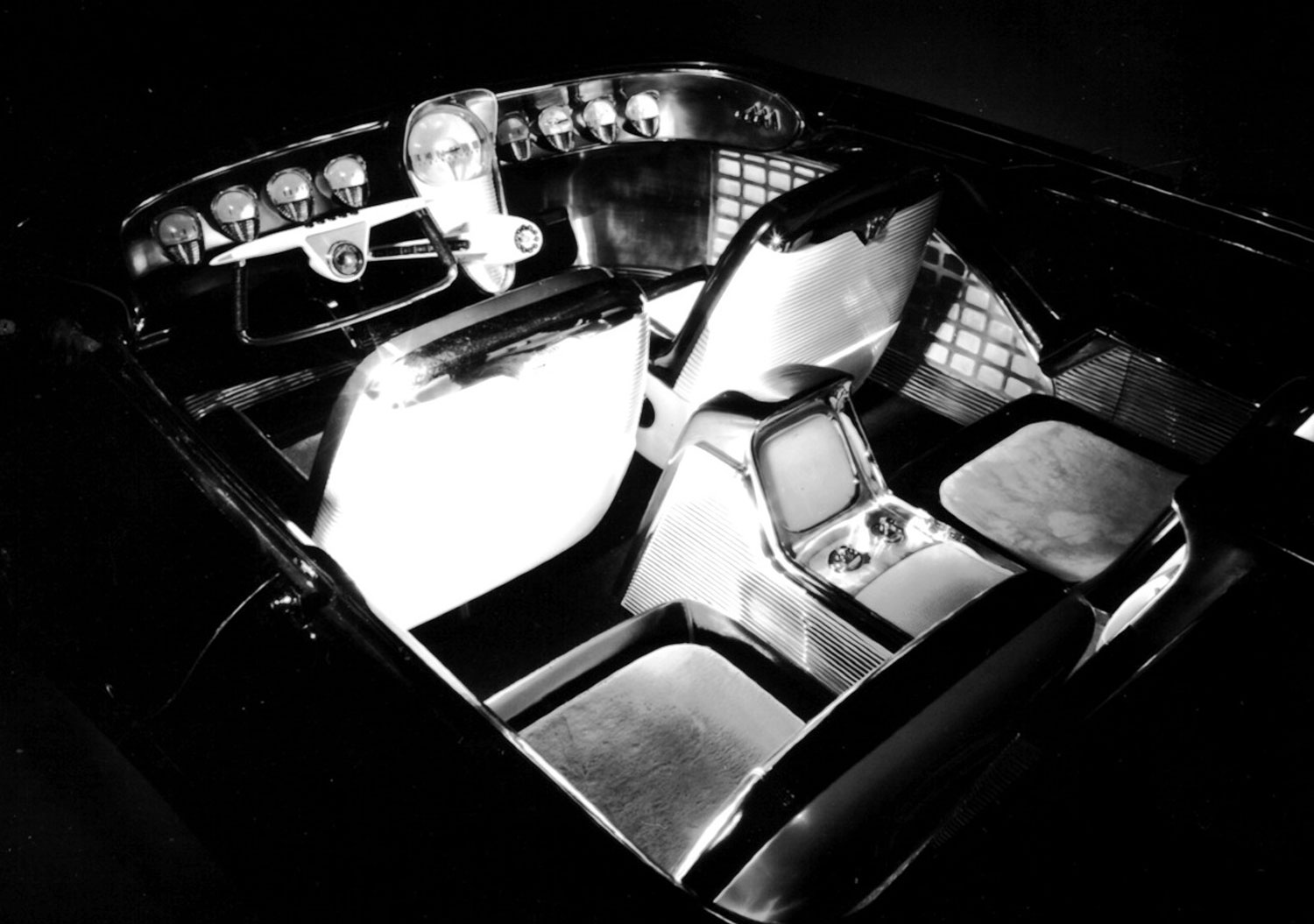
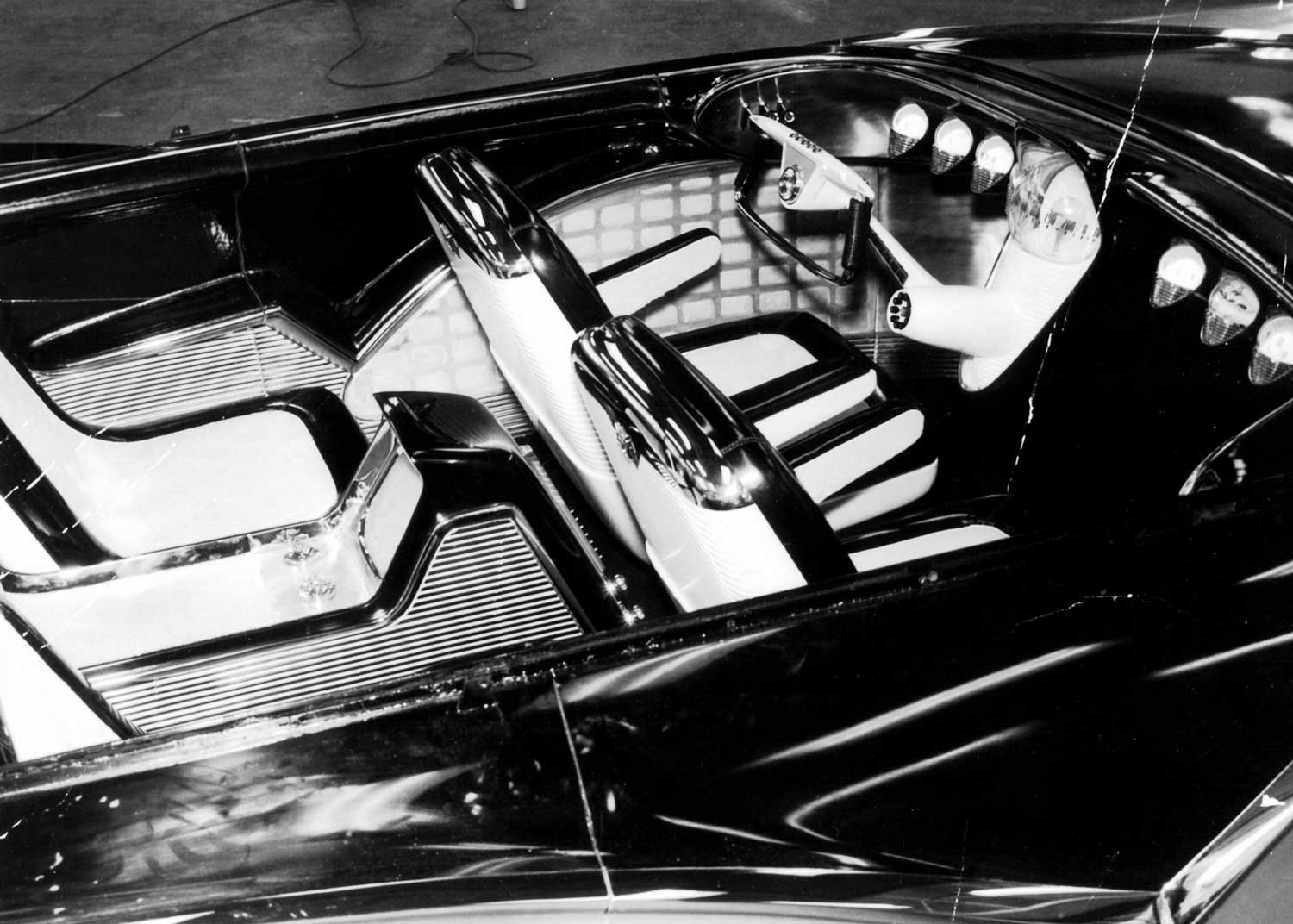
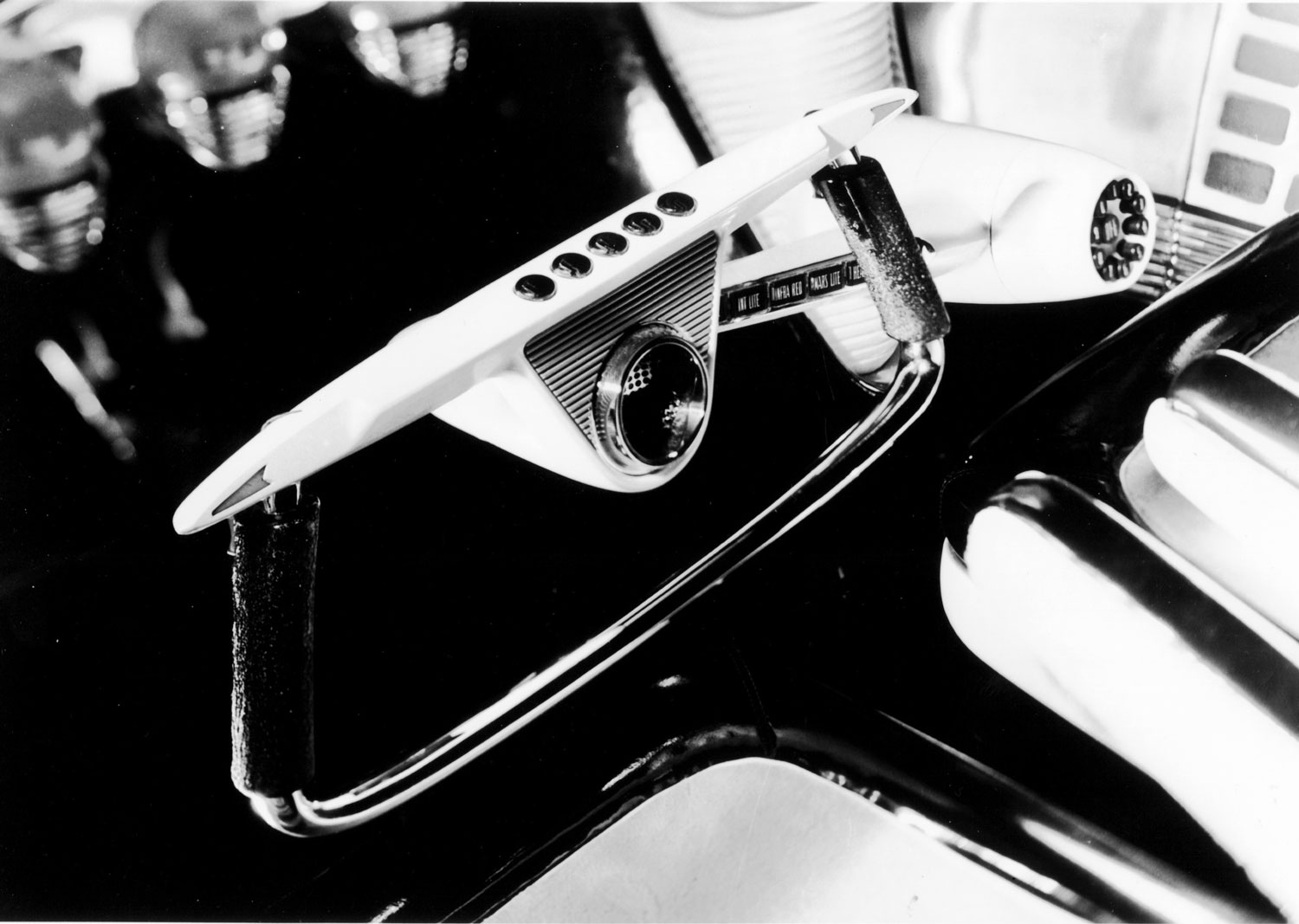
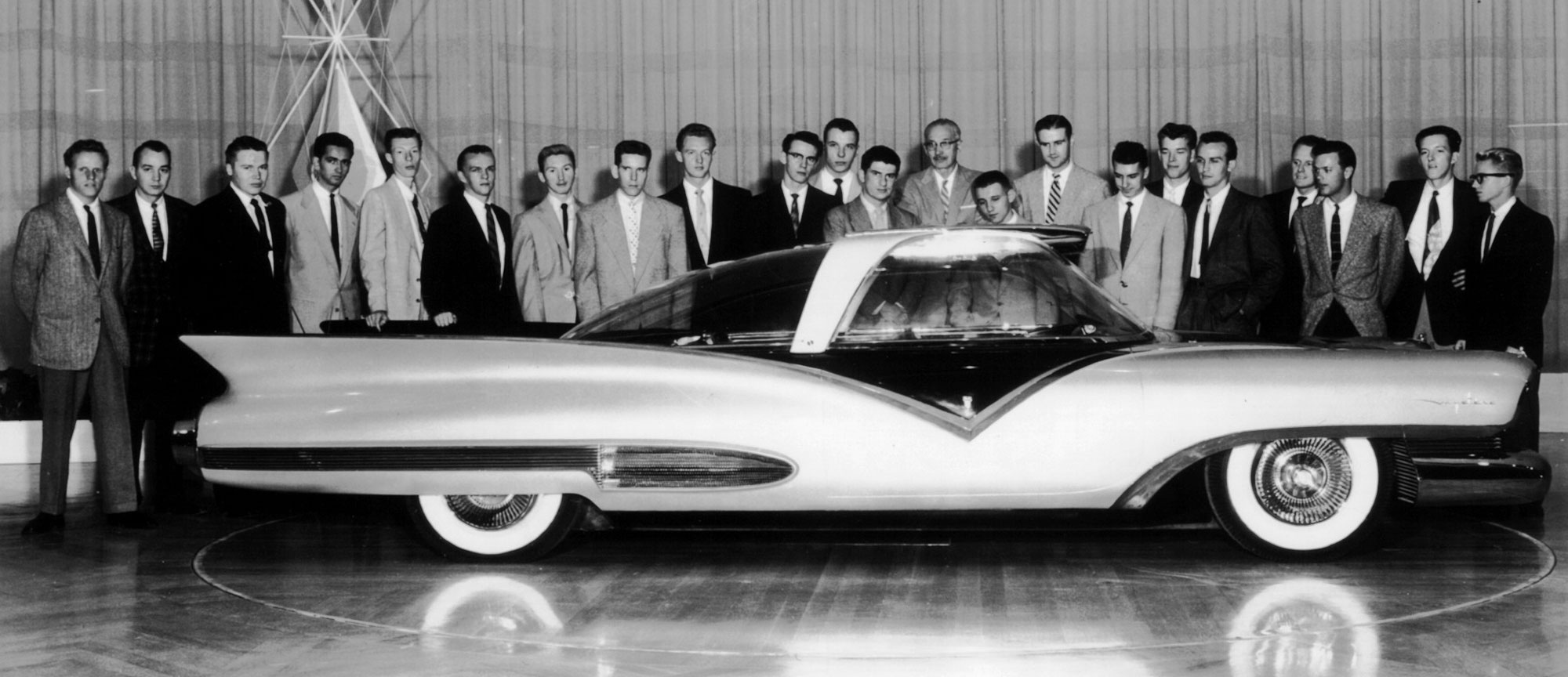
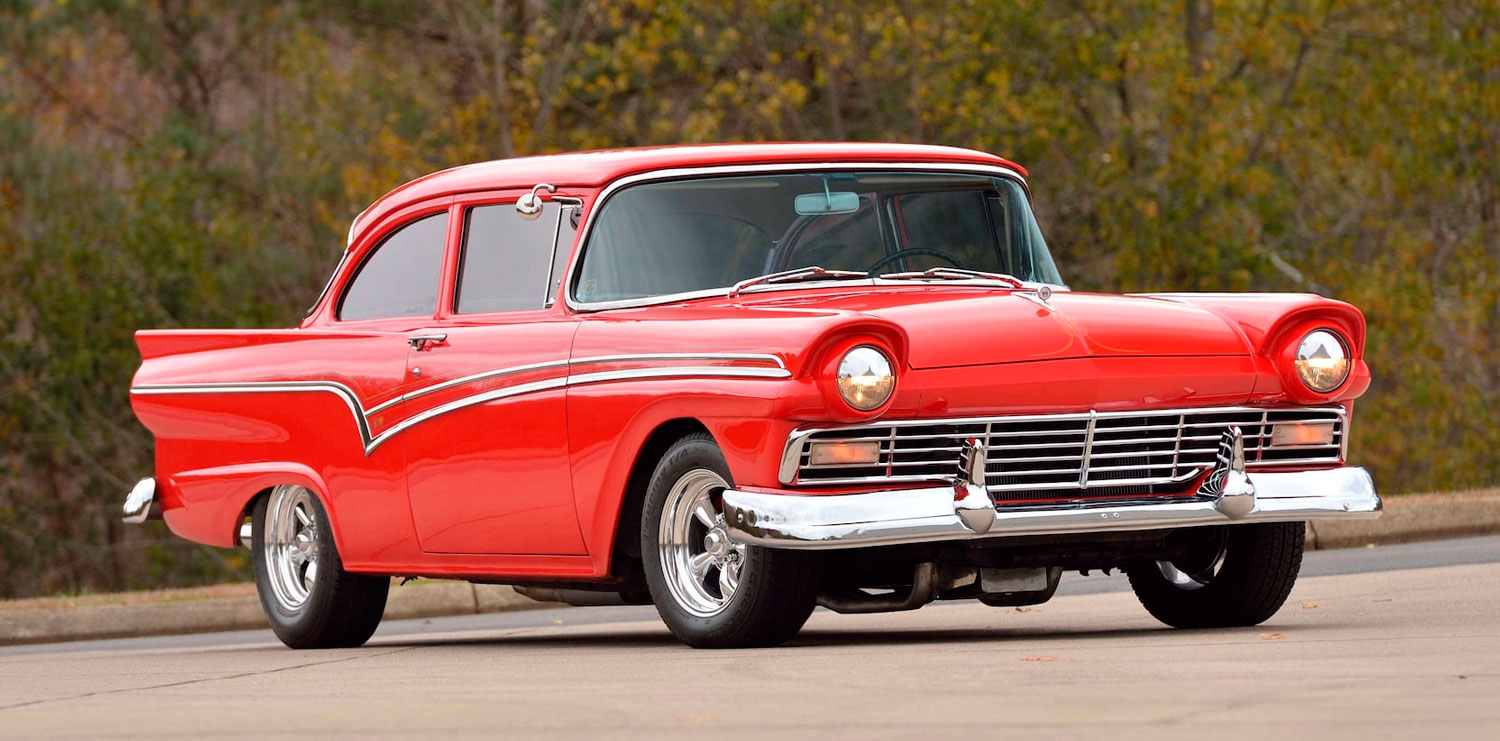
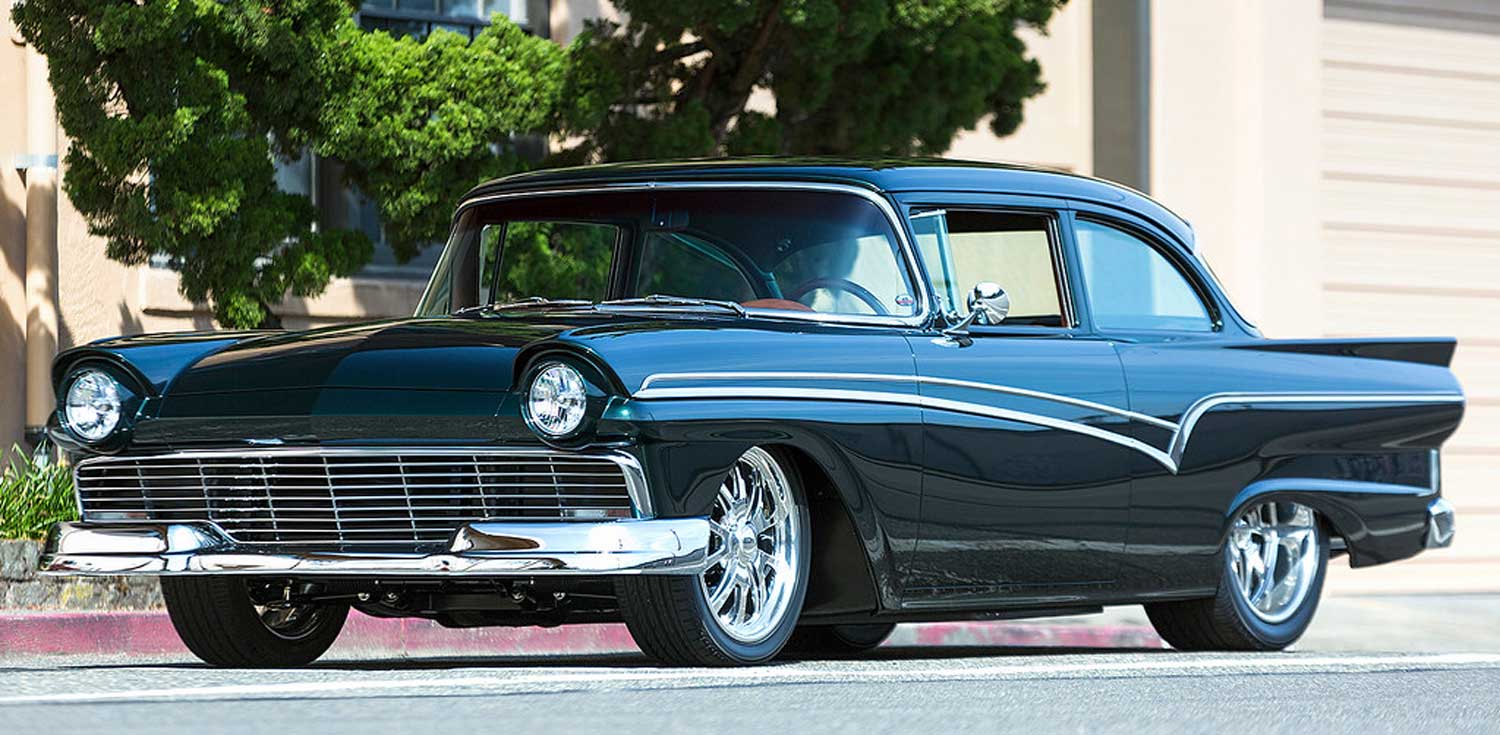
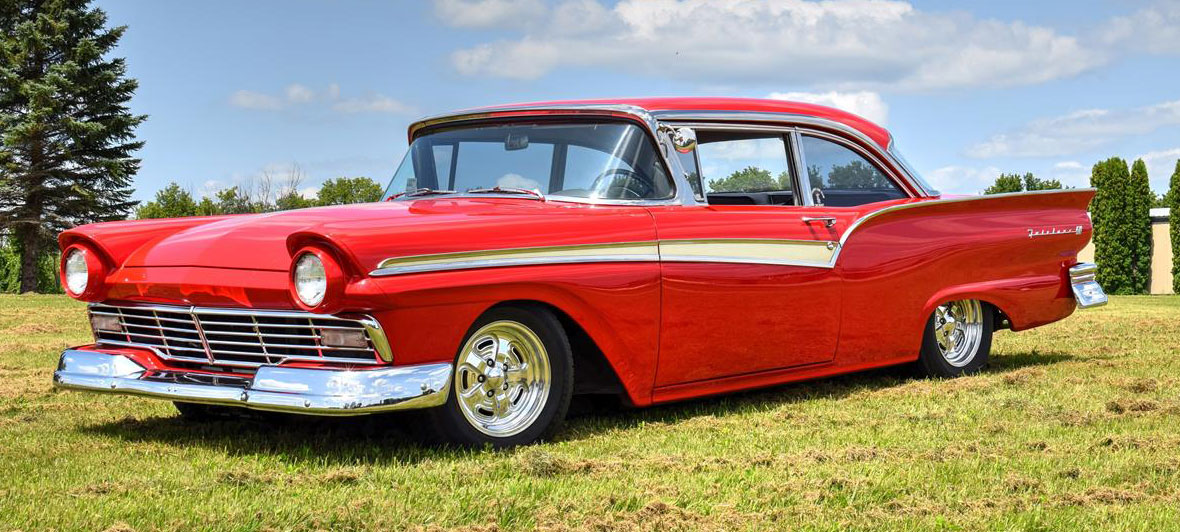
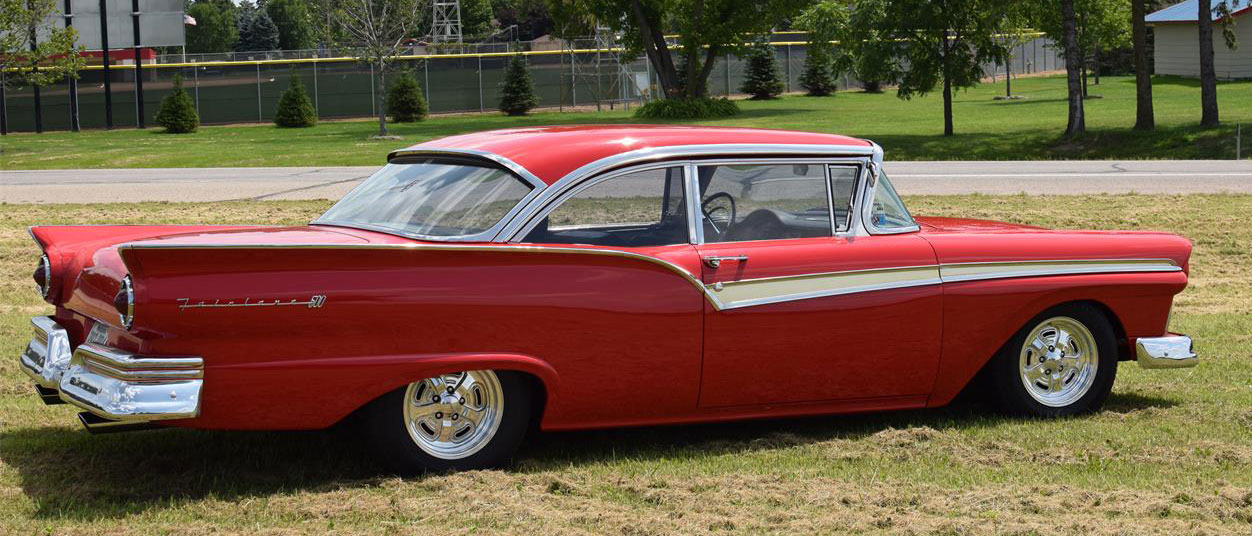
Wonderful back story of my favorite Ford production design of all time and my second favorite concept design! Damn shame the Mystere got the axe in ’70! If I thought I’d live to biblical proportions, I’d recreate it. lol
Thanks Jim and Cheryl for the entertainment.
Marty Martino
HIGH SCHOOL, 1954 OR 1955.
I lived in a small Michigan farm town, on a farm.
On a fall Sunday afternoon about 5PM, a light rain is falling.
Suddenly, going south on M-29 I am passed by the Mystere. I did not know what it was but would later find out. It was going through town about 40 MPH. Steam was coming out of the big tailpipes that were in the center of the tailamps. I am stunned, and follow it until it takes the curve toward the west.
That, and seeing the Road & Track cover with a Siata on it, has been burned into my brain. My dad loved cars and somewhere found a book about Ford Styling that he brought home to me. All those things together probably inspired me to be a car designer even though at the time I had no idea what it was.
The article says that the Mystere was not a runner. Yet I saw a car very much like it. I am sure that I was still in high school. So what could it have been?
The shot of sculptors working on the 3/8 clay was obviously posed after the fact as the complete car is shown in a photo taken in the design courtyard. Mystere’s design, compared to, say, GM’s Firebird II, was very flamboyant…much like the “Cellini of Chrome,” George Walker’s, fashion choices.
I’m sure I saw The Mystere at a car show in Cleveland Oh at The Grays Armory.Thought it was beautiful and also remember it appearing on several magazine covers
It’s interesting to see old concept car features show up in production cars. Sometimes it took a long time: the row of separate rounded instrument pods and shell buckets didn’t appear until the 1964 Thunderbird. Ribbed chrome (or aluminum) interior bits showed up in 1961 Thunderbirds and the 1962 Falcon Sprint console. I would swear some facelift gave the usual round Ford tail lights seen on Fords, Falcons, and Fairlanes over the years a larger tube center shape like the Mystere instead of the usual point or small light or reflector but I can’t find an example. Mercury Turnpike Cruisers had a double version of the roof air intake.